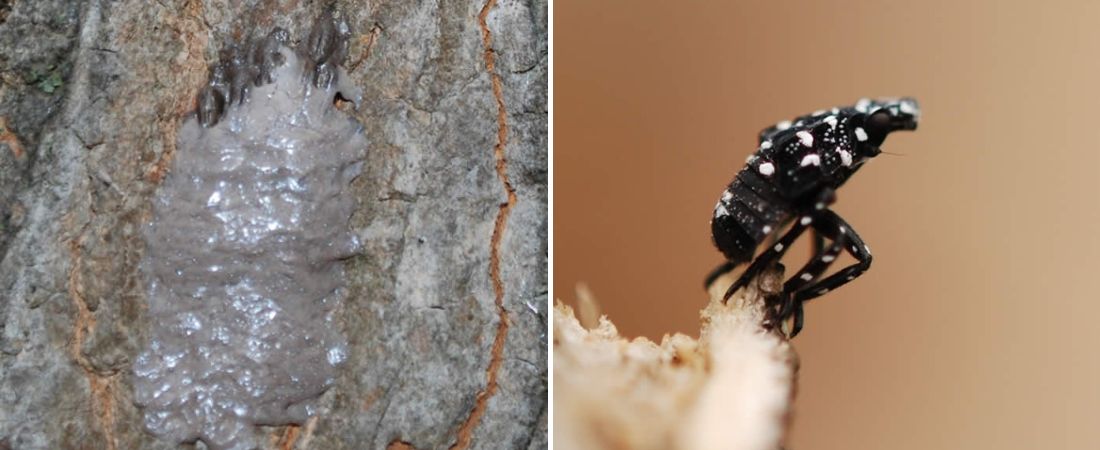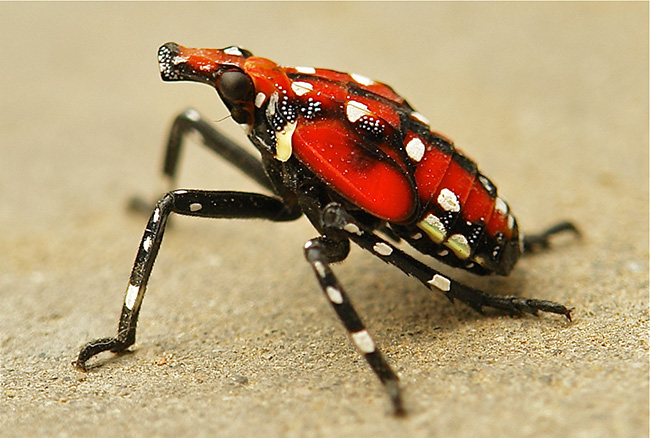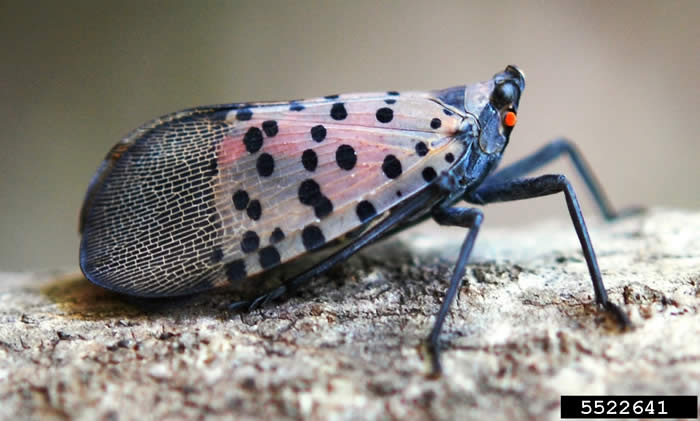
The North Carolina Department of Agriculture and Consumer Services has confirmed the first established presence of the invasive spotted lanternfly (Lycorma delicatula) in the state. Initial surveys indicate the known distribution of the pest is within a 5-mile radius in Forsyth County near Interstate 40 in Kernersville extending to the Guilford County line. Survey efforts are ongoing.
“We have been actively looking for this pest for years and had ramped up surveillance when it was detected last year near the North Carolina-Virginia line,” said Agriculture Commissioner Steve Troxler. “Members of our Plant Industry Division and the N.C. Forest Service are moving quickly to eradicate this brightly colored pest, and we ask members of the public to be on the lookout for more spotted lanternfly and report any finds.”

Spotted lanternfly poses a serious threat to the state’s wine and grape industries and can feed and cause damage on over 70 species of plants including apples, roses and other landscape plants, said Dr. Bill Foote, director of the NCDA&CS Plant Industry Division.
When spotted lanternfly populations jumped from the northern end of Virginia to an area just over the North Carolina state line, NCDA&CS increased its outreach and surveying, particularly to the state’s most vulnerable wine producing regions. This pest has been rapidly spreading since it was first identified in Pennsylvania in 2014.
Concentrated spotted lanternfly surveys are continuing in the initial Forsyth County discovery area to determine if the pest is in additional locations. Treatments are planned this week before mated females begin laying eggs.

Early detection and rapid response are critical in the control of spotted lanternfly and the Plant Industry Division has been preparing to provide the most effective response to slow the spread of this invasive pest in our state, Foote said.
If you see a suspect spotted lanternfly in North Carolina submit a picture through the online reporting tool at ncagr.gov/slf.
Residents are asked to be on the watch for this destructive pest after an established presence has been found for the first time in the state. Top photo, spotted lanternfly are shown in the third instar of their life cycle. Bottom photot, an adult spotted lanternfly pictured. Residents could find the insect in either stage of the life cycle now, but in coming weeks only the adult spotted lanternfly could be present up until frost.
Via NCDA&CS

